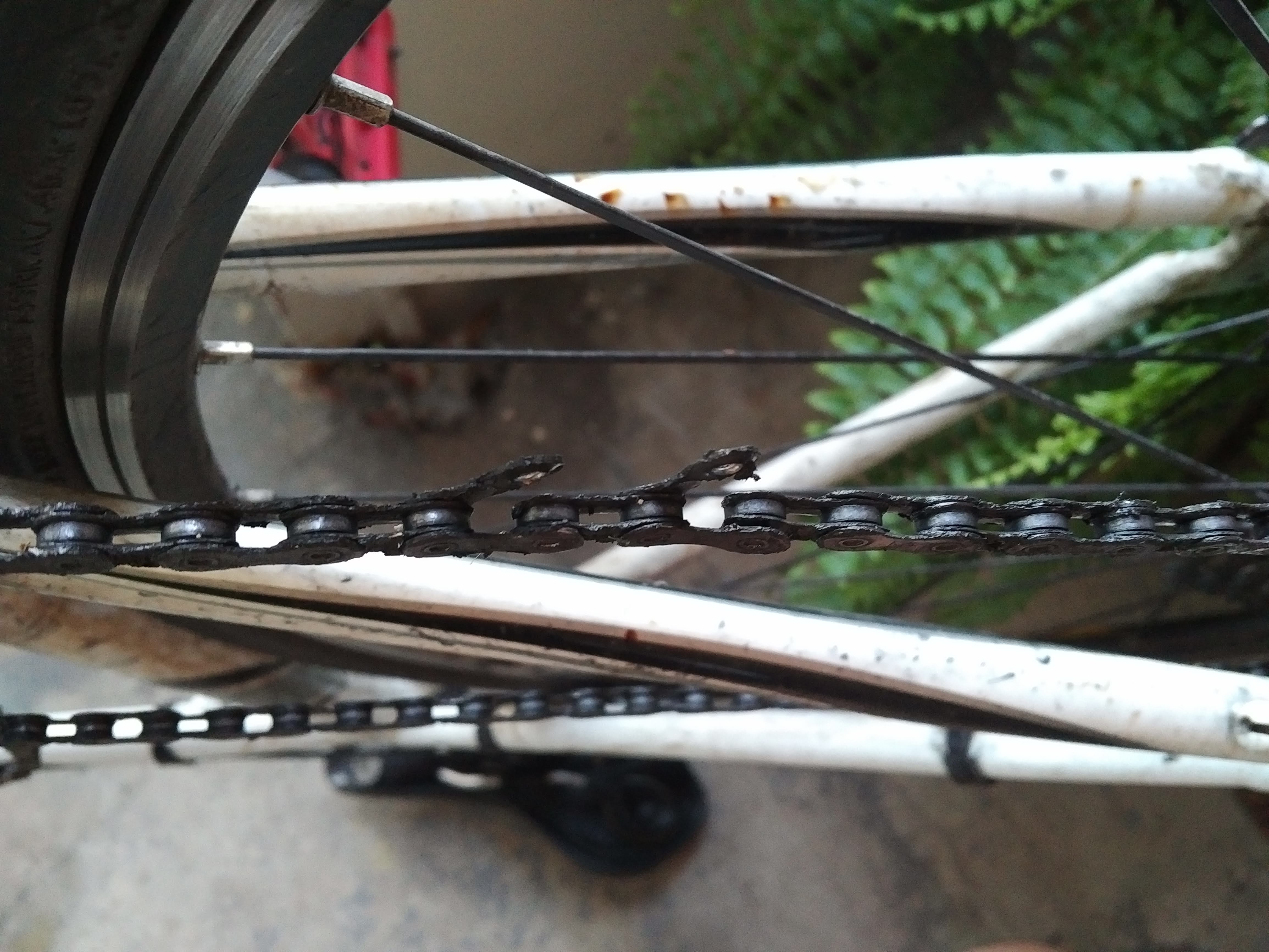- cross-posted to:
- bicycles@lemmy.ca
- cross-posted to:
- bicycles@lemmy.ca

This is an Ultegra 11s chain after 1000km of wear from a 1500W mid-drive. Used to ride a Tangent back in 2016. T’was shredding till it went *clunk*.

This is an Ultegra 11s chain after 1000km of wear from a 1500W mid-drive. Used to ride a Tangent back in 2016. T’was shredding till it went *clunk*.
That is just a worn out chain TBH. Velodrome track cyclists – where the big guys race bicycles at top levels – regularly post in the 2500 - 3000 watts range for race events.
When a chain starts to get gritty-greasy it is either time to take it off an wash it properly or replace it. Generally, that greasy state is from junk mixing with the oil to form something like a congealed grease. It is bad bad for this to happen. In heavy equipment like excavators, loaders, and bulldozers, this congealed junk in bearings is a big problem. If oil or grease is thought of like milk, this state is like congealed spoiled milk. It does not create a film to separate metal on metal contact and that causes grinding and failures like this.
One other common mistake people make is wiping a chain to service it, or using one of those stupid chain washer brush tools. The issue is that the chain consists of peg like pins and an outer free spinning roller over each pin. The chain may seem dirty on the outside, but what you see is not what matters. What really matters is the condition of what is under each roller. No matter what you do, pushing grit into the roller’s clearance is far worse than the appearance on the outside. The outside becomes a problem when you go to oil the chain and some grit floats into the roller clearance.
When working in a bike shop with a proper fluid parts washing station, one learns the difference quite clearly. When a chain is scrubbed using hot solvent and submerging it, the chain can be completely cleaned effectively inside and out. Doing this regularly at around 600 mile intervals tripled the life of my chains when I worked in bike shops.
You can still achieve the same basic thing at home. Just use acetone in a soda bottle. Put the lid on and shake a whole bunch. Then let it settle before removing the chain. Alternatively, just replace chains when they get super dirty like this.
Lastly, there are some super cheap Chinese bike chains that are shipped without proper grease; yes, most chains start with a very light grease. I believe those ship with some kind of assembly lube like how industrial equipment parts are shipped. Assembly lube is not an actual endurance lube. It is for preventing basic galling and preventing oxidation. Those chains break super easily. I snapped one in Under 1k miles even with regular high end chain lube.
The way your broke, it was likely in a shuttle position between cassette cogs when you applied a lot of power. The chain is slightly twisted in that transition and could have sheared plates like this. It doesn’t appear to have snapped. I’m not sure how a snap would feel on a powered bike. On road, you’ll be at the peak of the down stroke on one leg when a chain snaps, and it is so much force and weight distribution letting go instantly that you’re lucky if you do not go over the bars or fight the ground. It isn’t intuitive just how much force a roadie’s legs are actually putting down until they break a chain. Those are not fun.
Oh yeah, had my legs have been pushing on the pedals, things would have been ugly. If I remember correctly this happened during throttle-only operation so it was mostly sad noises followed by a loss of power. That was back in 2016-17.
As for chain maintenance, I recently started waxing my chains. Chain prices have gone up quite dramatically so it makes more sense to extend life by taking better care of them. Plus I now ride small hubs (the smallest I could find) so there’s no additional wear on the drivetrain.